TCL MQLED85, or model C765, is a television that can truly surprise, especially in this price range. It is one of the cheapest models featuring mini-LED technology, which is immediately evident in the picture quality. The blacks are deep, and the brightness is sufficient even in a brightly lit room. Thanks to the large number of dimming zones, watching movies in the evening is a pleasure – the blacks are really deep, and the picture in dark scenes looks clear. However, it's not perfect – in some scenes, you may notice minor issues with small bright elements, but this is really a minor detail compared to what this model offers. Google TV performs excellently here – there are plenty of apps, and using the system is simply convenient. Voice control in Polish works flawlessly, which can be particularly useful if you don't want to type movie titles using the remote. Of course, there are minor shortcomings, such as the lack of recording capabilities, but these are not things that interfere with daily use. For gamers, it is also a fantastic option. Support for HDMI 2.1, VRR and low input lag means the television handles consoles well and competes effortlessly with more expensive models from Korean or Japanese manufacturers. At this price, it's hard to find something better when it comes to smooth and responsive gameplay. During testing, we encountered a few minor software issues, but it's hard to say whether that's a serious downside. We hope that TCL will release updates, so there’s a chance this issue will be resolved quickly. TCL MQLED85/C765 is an excellent choice if we are looking for a television with good picture quality and modern features at a reasonable price. It is a model that combines affordable mini-LED technology with a convenient Google TV system, and it’s also great for gaming. Minor software shortcomings are something you can live with, especially considering what this television offers in its class.
- Matching (Score)
- Our verdict
- TV appearance
- Where to buy
- Contrast and black detail
- HDR effect quality
- Factory color reproduction
- Color reproduction after calibration
- Smoothness of tonal transitions
- Image scaling and smoothness of tonal transitions
- Blur and motion smoothness
- Console compatibility and gaming features
- Input lag
- Compatibility with PC
- Viewing angles
- Daytime performance
- Panel details
- TV features
- Apps
- Playing files from USB
- Sound
TCL MQLED85 / C765 vs Samsung QN900D Neo QLED 8K
Direct comparison
C765 / MQLED85
QN900D / Neo QLED / Excellence Line


Panel type: LCD VA
Resolution: 3840x2160
System: Google TV
Model year: 2024
Complete the survey to find out the result

Panel type: LCD VA (wide viewing angle)
Resolution: 7680x4320
System: Tizen
Model year: 2024
Complete the survey to find out the result

Overall rating
7.2
7.5
Movies and series in UHD quality
6.8
7.6
Classic TV, YouTube
6.6
7.8
Sports broadcasts (TV and apps)
6.5
7.6
Gaming on console
8.6
9.0
TV as a computer monitor
8.6
8.0
Watching in bright light
6.3
5.0
Utility functions
6.5
7.4
Apps
9.6
8.7
Sound quality
6.9
7.4
Complete the survey to find out what fits your preferences
Advantages
Great choice for gamers - lots of features, low input lag, 144Hz
High panel brightness - good performance during the day
Good black levels and contrast
Comprehensive Google TV
Premium build at a low price
Great contrast and blacks
High brightness - good HDR effect
The smoothest TV in the world - 4K@240Hz
Great for gaming - low input lag, many features for gamers
Good digital processing - handles low-quality material well
Advanced operating system - Tizen
Great design - super slim, OneConnect, "floating" central stand
Disadvantages
Average viewing angles
No recording function
Price
No Dolby Vision
Our verdict
Samsung QN900D is undoubtedly the top model for 2024. This television is equipped with Mini LED technology, which offers excellent picture quality – deep blacks and high brightness make films and high-resolution content look fantastic. When watching dynamic scenes in movies, the colours and details were exceptionally good – especially after calibration. HDR also delivers – bright elements have great detail levels, and colours are vibrant and natural. One of the strongest points of QN900D is the smooth motion. Supporting a refresh rate of 240 Hz at 4K resolution is rare in the market. Dynamic scenes in sports or games look incredibly smooth, with no trace of blurring. However, it’s worth adding that the full capabilities of this feature will mainly be utilised by advanced PC users. An input lag of 9 ms additionally ensures very responsive gameplay, which will surely please gamers. Tizen runs smoothly and offers access to all popular applications, such as Netflix, YouTube, or Disney+. Moreover, SmartThings features and support for AirPlay make it easy to connect the television with other devices in the home. This is a great solution if you value convenient control of your smart home. An additional feature is Ambient Mode – the television can blend into the living room decor by displaying decorative graphics. QN900D not only performs well but also looks great. Slim bezels, a central stand, and the One Connect module that allows cables to be hidden make the television present elegantly. If aesthetics are important to us, it will be hard to find something better. As a flagship model, QN900D is simply expensive. Unfortunately, the lack of agreement between Samsung and Dolby Vision may still be a significant downside. Especially when watching content on platforms that utilise this format. In the most demanding HDR scenes, it also happens that the contrast is not as perfect as one might expect. And what about 8K resolution? For now, it’s hard to find content that fully utilises it, unless we are technology enthusiasts of the future. Samsung QN900D is certainly a television for those seeking a top-tier device and are willing to pay for it. However, if we are looking for similar quality at a significantly lower price, it’s worth mentioning the equally good QN95D – it offers a similar picture quality, without the 8K resolution, which is still more of a curiosity than a standard.
TV appearance










Contrast and black detail
7.7/10
8/10
Local dimming function: Yes, number of zones: 720 (36 x 20)
Local dimming function: Yes, number of zones: 1344 (56 x 24)
Contrast:
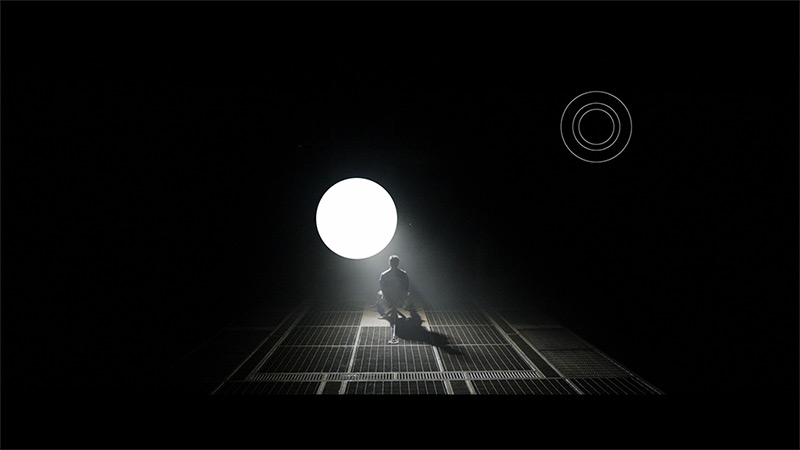
Result
∞:1
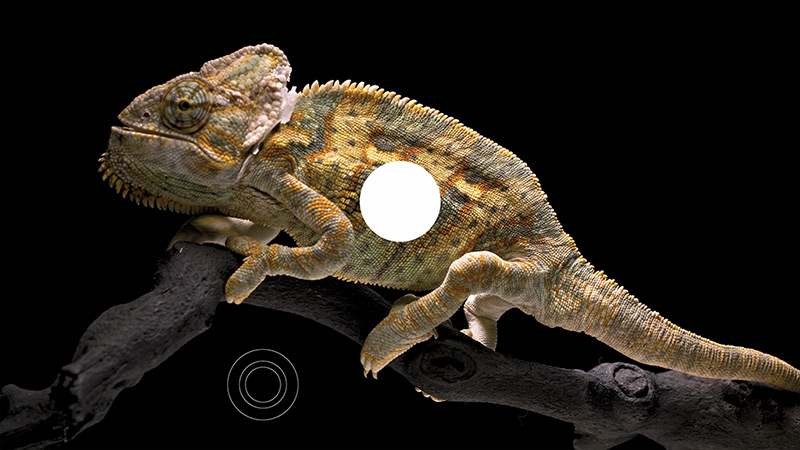
Result
30,150:1
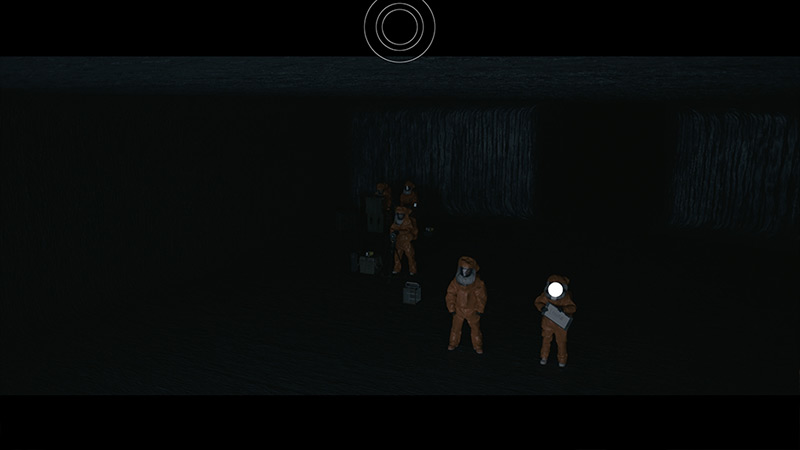
Result
17,500:1

Result
9,500:1
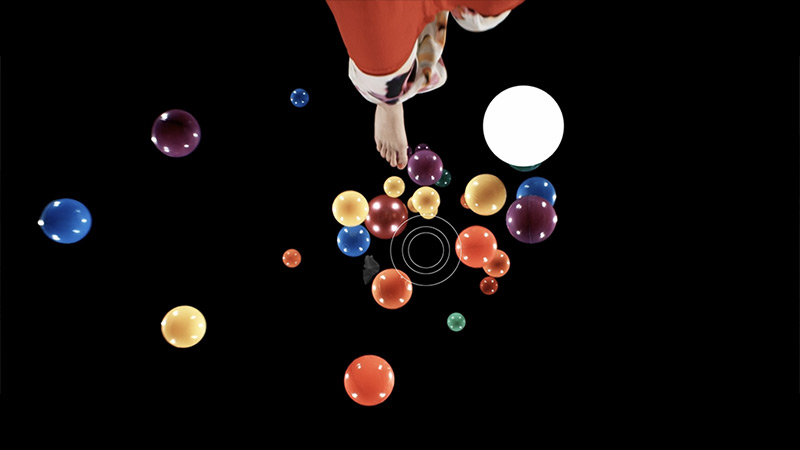
Result
5,750:1

Result
∞:1

Result
205,000:1

Result
89,000:1

Result
7,800:1

Result
4,000:1
Halo effect and black detail visibility:


TCL MQLED85/C765 stands out due to its use of a VA panel and Mini LED backlighting, which makes a huge difference compared to traditional backlighting systems. Mini LED, with its significantly smaller diodes, allows for more precise control of the screen's backlighting, resulting in much better contrast and deeper blacks. The model with a 55-inch diagonal that we are testing has an impressive number of over 700 local dimming zones, providing exceptional precision in image display. It's worth noting, however, that the number of backlighting zones may vary depending on the screen size – for larger diagonals, the number of zones naturally increases due to the larger screen area, allowing larger sizes to achieve better results in terms of contrast and black levels. Thanks to the enormous number of zones, the TCL MQLED85/C765 achieved results comparable to OLED screens on our first test pattern from the movie "Oblivion," offering nearly reference-level contrast. But what happens when we test this model in even more demanding conditions? How will the TV perform in tougher scenarios? Overall, the TCL MQLED85/C765 performs very well with black levels, but in some cases, the local dimming algorithm is not perfect. On dark backgrounds, smaller bright elements can lose clarity and brightness, as confirmed by our latest pattern from the Pioneer Kuro test disc. Despite some imperfections in the local dimming algorithm, and thus a slight occurrence of the HALO effect (which is a bright halo around bright objects on a dark background caused by deficiencies in the screen's local dimming), the results achieved by the TCL MQLED85/C765 are impressive, especially considering its price. This TV offers contrast and black depth that can compete with models that are even twice as expensive.
As befits the flagship model in the series, the Samsung QN900D television is equipped with a VA panel, which in the 65-inch version offers an impressive number of zones – as many as 1344. It’s worth noting that larger sizes of this television have even more zones, which naturally translates to better contrast. During tests in scenes from the film "Oblivion," the QN900D performs excellently. Contrast values approaching infinity are truly stunning, allowing this television to be confidently compared with OLEDs. Unfortunately, like all LCD televisions, this model also has its limitations. In the case of very small elements, certain irregularities are visible, such as halo effects (e.g., in the film "Sicario 2") and at times significant screen dimming (e.g., in scenes from the film "Gravity"). Despite these imperfections, the QN900D Samsung is undoubtedly one of the best LED televisions available on the market, capable of generating very high contrast.
HDR effect quality
6.2/10
6.6/10
Luminance measurements in HDR:

Result
1016 nit
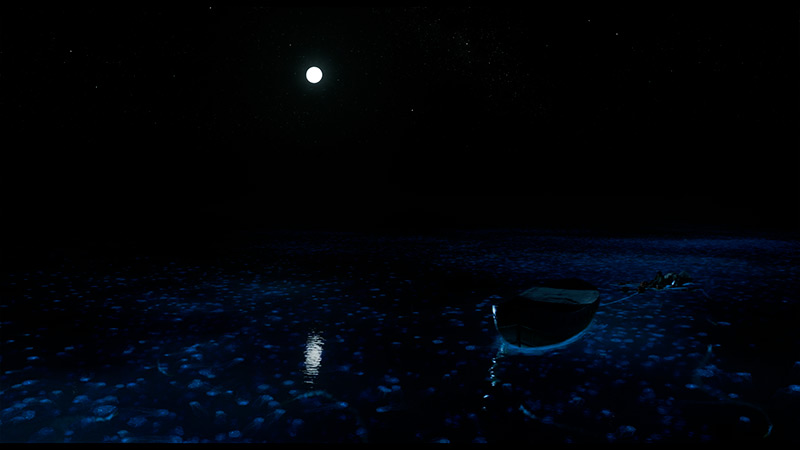
Result
365 nit
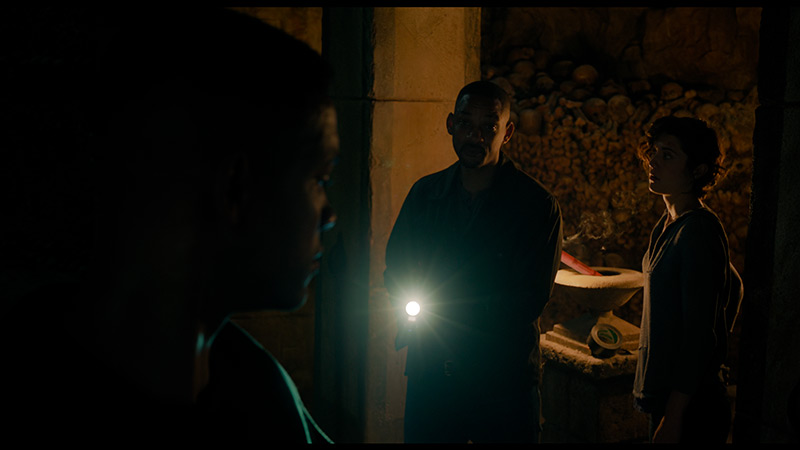
Result
765 nit
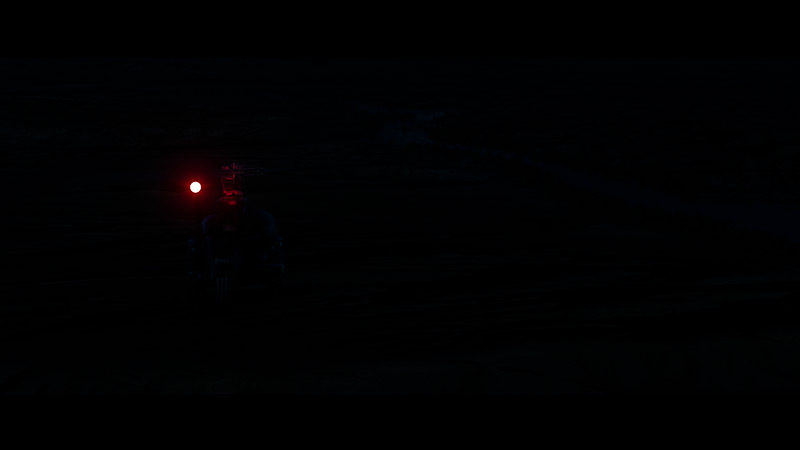
Result
235 nit

Result
1178 nit

Result
1447 nit

Result
665 nit

Result
907 nit

Result
432 nit

Result
793 nit
Scene from the movie “Pan” (about 2800 nits)


Scene from the movie “Billy Lynn” (about 1100 nits)


Static HDR10


Dynamic: Dolby Vision
Dynamic: HDR10+


HDR luminance chart:
Samsung QN900D Neo QLED 8K
HDR luminance
TCL MQLED85 / C765
HDR luminance
The television TCL MQLED85/C765 performs well in handling HDR. In the tested movie scenes, where the screen is at 100% brightness, the model achieves impressive results around 1000 nits, providing intense and realistic rendering of HDR content. However, similar to contrast, the dimming algorithm may show some limitations. Despite a large number of Mini LED zones, the television does not always manage to "wow" the user with brightness in very challenging test scenes. For instance, in the scene from the film "Life of Pi," where a bright moon appears against a dark background, and in another scene from "Sicario 2," where a very bright light effect is visible against a dark background, the television did not reach maximum intensity. For users expecting a perfect HDR effect in such extreme cases, the TCL MQLED may come up a bit short. However, in terms of colours, the television stands out with a very high coverage of the DCI P3 colour gamut at 95%, which is an impressive result comparable to much more expensive models. TCL MQLED85 / C765 offers support for various HDR formats, including Dolby Vision and HDR10+, which is crucial for cinema image fans. Although this model achieves brightness over 1000 nits, the TCL MQLED85 may struggle to reflect details in very high-contrast scenes. For better HDR quality control, the C765 is equipped with dynamic tone mapping, making the image more realistic and natural depending on the content.
The Samsung QN900D easily showcases its high capabilities in light production during synthetic tests – 1400 nits is truly an impressive result. It also demonstrated these capabilities in the first scene of the movie "Life of Pi," where we see a brilliant burst of the rising sun. However, due to issues with the dimming algorithm, some problems can be observed here. In the test scenes from "Sicario 2" and the second scene from "Life of Pi," these values are not as high, averaging around 500-600 nits. While this may not be the worst result among Mini LED TVs, more could be expected given the price of the television. Nevertheless, the television deserves praise for covering a wide colour gamut of DCP P3 at 96%. Although there are technologies offering higher values, this result is still satisfactory.
Factory color reproduction
5.2/10
6.6/10


Factory Mode
After calibration


Factory Mode
After calibration
The television TCL MQLED85/C765 was tested in movie mode, which, while seeming to be the best setting from the manufacturer, is not without its flaws. The colour reproduction in HD/SDR mode MQLED85 shows certain shortcomings. In the analysis of white balance, there is a significant lack of blue colour, which can affect the overall image quality, particularly in bright scenes where blue shades are crucial for natural representation. The overall image may then appear too warm. As for gamma contrast, the graph shows that there is a large jump above the reference line of level 2.4 at the beginning, which may suggest significant dimming of brightness in darker areas, leading to loss of detail in blacks. Then for most of the time, the values are below this line, which can lead to loss of detail in the brighter parts of the image. Such a distribution may negatively impact the perceived image quality, especially when watching regular TV in HD quality.
In the case of the 4K HDR image quality of the TCL MQLED85/C765 television, there is a noticeable excess of red colour in the analysis of white balance. This excess can significantly impact the viewer's experience, leading to several notable effects. First and foremost, an excessive amount of red can make other colours, such as green or blue, appear muted or unnatural. This distortion of colour balance can result in an overall impression of "oversaturation," which detracts from the image's naturalness and authenticity. In terms of contrast, the EOTF (Electro-Optical Transfer Function) graph indicates that most values are above the reference line, suggesting an intense boost in brightness in the bright areas of the image. However, the exception is the start of the graph, where the EOTF line is below the reference, which may lead to excessive dimming of small light elements.
Users should be aware that despite using the best mode, which is movie mode, the television is not free from flaws in the context of image settings, so it is worth considering adjusting the settings to achieve better results.
The QN900D television offers a Filmmaker mode that is designed to watch movies in the most natural way possible; however, this mode is not without its flaws. For HD content, the white balance shows a dominance of red and blue, which causes the image to shift towards pink hues. In contrast, for 4K HDR content, the situation is reversed – the reduction of blue and red levels results in warmer scenes and a shift towards yellow tones. This is confirmed by Color Checker tests, which clearly show that the colour samples veer in that direction.
When it comes to brightness and the associated contrast, the gamma is significantly distorted. The biggest issue is a noticeable jump at the beginning of the curve, indicating that dark details are overly brightened, causing the image to lose depth in the darkest areas - this is due to local dimming. For 4K HDR materials, the EOTF curve looks quite good, but it remains below the reference level, impacting the overall dynamics of the image.
Color reproduction after calibration
7.8/10
8/10




After professional calibration of the television TCL MQLED85/C765, its colour properties in film mode have significantly improved, resulting in much more satisfying visual experiences. Both in SDR and HDR modes, the white balance shows no serious errors, and the graph appears to be much better harmonised. Users can now enjoy natural colour reproduction, which is crucial for achieving an authentic experience while watching films. It is worth noting that in HDR content, there may be minor colour reproduction errors at the end of the graph, but these are significantly smaller than before calibration. As a result, characters and landscapes become more realistic, enhancing the depth of immersion in the story.
Regarding contrast, the gamma curve, responsible for HD quality, has been completely free of drops below the reference line, which means better visibility of details in dark scenes. However, there is still a slight boost at the beginning of the graph, which may affect the perception of bright elements. For HDR content, the EOTF curve also shows fewer errors, although some issues with reproducing mid-tones may still be noticeable. The EOTF curve measured on real film scenes still shows a significant brightness boost, so the image may appear more intense but artificially brightened. This is a typical problem for TCL brand televisions, which may appeal to untrained viewers but can frustrate those more familiar with an ideal image.
What benefits does professional calibration bring to film enthusiasts? Thanks to it, viewing becomes even more realistic and immersive, allowing every scene to be experienced fully, preserving details and natural colours.
After calibration, the Filmmaker mode can truly be called worthy of its name. The white balance for both HD and 4K HDR content has significantly improved, resulting in colours that are more natural and consistent. The image has gained in realism, with pink hues in HD content effectively eliminated, as well as the yellow haze in 4K HDR content. Thanks to the calibration, the television now offers much better colour reproduction, positively impacting the viewing experience.
When it comes to brightness, the situation with gamma is now the opposite – a clear drop is visible at the beginning of the graph, making the darkest details harder to discern. The EOTF curve for 4K HDR content has remained largely unchanged and is still below the reference level, indicating that the television still struggles to maintain adequate brightness. This is related to the aggressive dimming algorithm that affects the overall brightness of the image. You can see how the television fights to maintain high brightness or perfect black.
Despite the limitations associated with local dimming, the Samsung QN900D has improved in colour reproduction quality, as confirmed by the Color Checker test results – the colour samples are now much closer to the references, making the image more natural and pleasant to the eye.
Smoothness of tonal transitions
7/10
8/10












The fluidity of tonal transitions in the TCL MQLED85/C765 television is decent, although noticeable issues arise in both bright and dark test scenes. Particularly evident are the colour joins in the scene from the film "The Green Knight", where the red colour of the water transitions to black. Despite these imperfections, the overall gradient quality is acceptable and does not overly detract from the visual experience. The television handles most scenes well, offering satisfactory tonal transitions, contributing to an overall satisfying visual experience that won't spoil our cinematic enjoyment.
The Samsung QN900D TV handles tonal transitions smoothly, deserving a rating of 8/10. The colour gradation is generally good, although not perfect – in darker scenes, some imperfections may be noticeable to more demanding users. Despite these minor flaws, the effect should satisfy most viewers, offering natural transitions.
Image scaling and smoothness of tonal transitions
5.1/10
7/10
Smooth transition function


Image without overscan on the SD signal


We will now take another look at the tonal transitions on the TCL MQLED85/C765 TV, but in the context of lower image quality. Despite the presence of the "Gradual Smoothing" option, when set to "low", the effects are practically invisible, disappointing users who expect an improvement in image quality. On the other hand, the "high" setting yields minimal results, and worse still, it can blur important details, negatively impacting the sharpness and clarity of the displayed image. However, in the context of image scaling, the TV successfully displayed the image without overscan, meaning we do not lose any part of the view. The image looks quite decent, and details such as tree branches or the outlines of models do not show significant jaggedness, which positively affects the visual quality.
The fluidity of tonal transitions in lower-quality materials looks fantastic – the Noise Reduction feature very effectively smooths out tonal transitions while getting rid of film grain. Although the removal of grain isn't always desirable, the overall final effect is very aesthetically pleasing, especially for those who prefer a cleaner image.
When it comes to upscaling, or image scaling, QN900D shows the tremendous capabilities of the new processor with AI technology. Photos and materials in lower resolution are scaled while retaining many details – for example, a photo with a model looks amazing, free of unnecessary jagged edges, and the branches in the background are not overly serrated.
Blur and motion smoothness
7.5/10
7.4/10


Blur (native resolution, maximum refresh rate):






Blur (BFI function enabled):



Image flickers in this mode
Blur ():
Blur (2160p 240Hz):



TCL MQLED85/C765 is equipped with a standard refresh rate panel of 120 Hz, with the possibility of increasing it to 144 Hz when connected to a powerful computer. The television also offers a multi-level motion smoother, which is mainly aimed at users wanting to improve the fluidity of motion in films. It allows for adjusting the intensity of the effect on a scale from 0 to 10, enabling precise tailoring of the image smoothness to individual preferences. The response time of the panel is decent, but not perfect. We can observe motion blur occurring behind both dark and medium objects.
Samsung QN900D is currently the fastest television in the world – literally. A refresh rate of 240 Hz in 4K resolution is an amazing value that PC gamers will surely appreciate. As for movie fans, they won't be disappointed either – Samsung offers a 10-level scale in the picture clarity settings, allowing users to adjust the image. We can choose whether the television should provide a smoother, theatrical effect at the highest settings, or a more cinematic one, with a visible frame, at the lowest settings.
Console compatibility and gaming features
9.8/10
9.5/10
- ALLM
- VRR
- VRR range48 - 144Hz48 - 240Hz
- Dolby Vision Game Mode
- Correct implementation of HGIG
- 1080p@120Hz
- 1440p@120Hz
- 4K@120Hz
- Game bar








TCL MQLED85/C765 has achieved an impressive rating in the gaming features category, making it an excellent choice for gaming enthusiasts. The television supports all the latest technologies that significantly enhance the gaming experience. Among the key gaming features is ALLM (Auto Low Latency Mode), allowing the TV to automatically switch to low latency mode, minimising response time and ensuring smooth gameplay. VRR (Variable Refresh Rate) supported from 48 to 144 Hz eliminates stuttering and screen tearing in dynamic game scenes. Additionally, the TV supports the Dolby Vision Game Mode, which provides better image quality in games with exceptional depth of colour and contrast. TCL MQLED85/C765 also features a decent but not the best implementation of HGiG (HDR Gaming Interest Group), optimising the display of HDR games, however, in the case of TCL, it causes bright details to wash out, resulting in some elements merging into a white blob - more on this can be read in the colour reproduction section. It supports various resolutions such as 1080p@120Hz, 1440p@120Hz, and 4K@120Hz, allowing gamers to enjoy higher image quality and better fluidity. The Game Bar feature allows for easy switching between game settings and quick control of parameters, which significantly simplifies adjusting the TV to individual needs. With support for G-Sync and FreeSync technologies, users of NVIDIA and AMD graphics cards will be pleased with the refresh rate synchronisation capabilities, eliminating tearing and stuttering issues, ensuring smoother and more immersive gameplay.
MQLED85/C765 is a television that combines advanced technologies and excellent support for gamers, making it the ideal choice for those looking to maximise their gaming experiences.
Samsung QN900D is a television that offers excellent compatibility with consoles and a range of features that gamers will appreciate. It has 4 HDMI 2.1 ports, although unfortunately without the full bandwidth of 48 Gb/s. Nonetheless, for the average user, this is more than sufficient. Additionally, the television supports Auto Low Latency Mode (ALLM) and Variable Refresh Rate (VRR), which means smoother images and no screen tearing during dynamic gameplay. The G-Sync and FreeSync technologies are also noteworthy, providing optimal compatibility with consoles and computers equipped with the appropriate graphics cards, minimising stuttering effects and ensuring a smooth picture.
One of the unique features available only in Samsung televisions is the Xbox Game Pass app, which allows for game streaming without the need for a console. This is a very convenient solution that lets you enjoy your favourite games without having to purchase additional hardware. Furthermore, the QN900D has Game Bar – a special panel that enables quick access to gaming-related settings, making game mode setup quick and intuitive.
Another interesting feature is the Auto Motion Plus Game function, which is a special motion smoothing mode that can increase the frame rate (works up to a maximum of 4K@60Hz). Importantly, this does not cause a significant increase in input lag, allowing players to enjoy both greater image fluidity. All these features make the Samsung QN900D an excellent choice for those looking for a gaming television with the highest possible parameters.
Input lag
9.8/10
9.8/10
SDR
HDR
Dolby Vision
Latency in the TCL MQLED85 television reaches impressively low levels under any conditions. Even the most demanding gamers will surely appreciate the minimal input lag of just 8 ms at 4K 120 Hz settings with HDR. Moreover, the latency remains at the same level even when Dolby Vision HDR is enabled, which is not the case with many competing models.
When it comes to signal delay (input lag), Samsung QN900D achieves impressive results. Values below 15 ms are truly excellent, making the TV an ideal choice for gamers expecting minimal delays during gameplay. The input lag at 8K resolution is also noteworthy, clocking in at just 17 ms – this is also a very good result that allows for enjoying dynamic games in the highest possible resolution without noticeable delays.
Compatibility with PC
8.6/10
8/10


TCL MQLED85 works well as a computer monitor. Thanks to its support for chroma 4:4:4, the text on the screen is sharp and readable, which is essential for people working with text documents or spreadsheets. One of the biggest advantages of this model is its exceptionally low input lag in "PC" mode, which is just 8 ms. This is a reference-level result that ensures smoothness and responsiveness, crucial for both gamers and those involved in video editing. However, it's worth noting that there is a slight issue related to font display on dark backgrounds. Upon zooming in on the tested font picture, it can be seen that horizontal lines are darker compared to vertical ones. This means that the sub-pixels in the TV may not fully illuminate in such cases, which can affect the quality of displayed text. Nonetheless, the overall performance of TCL MQLED85 as a computer monitor is very good and will certainly meet the expectations of many users.
Samsung QN900D offers excellent compatibility with computers, making it a great choice for users looking for a large screen for work and entertainment. It supports full Chroma 4:4:4 colour reproduction, which translates to better image quality when using text and office applications. Font readability is quite decent, especially considering the 8K resolution, which offers an immense level of detail.
Unfortunately, despite the very high resolution, the television does have some issues with bright fonts on a dark background – one can notice slight shadows created by subpixels. It may not be a critical issue, but for more demanding users, it could impact comfort, especially when working in text applications. Nevertheless, the overall image quality and compatibility with computers are of a high standard. It's also worth praising the television for supporting 240Hz at lower resolutions such as 4K. This allows high-end PCs to showcase their prowess in games.
Viewing angles
3.2/10
7.8/10
The viewing angles on the TCL MQLED85 television are not its strong suit. The use of a VA panel causes the image to lose a significant amount of brightness when viewed at an angle. Changing the viewer's position, especially in a larger group setting, can make colours appear less saturated, and contrast may be less distinct. For this reason, it's recommended to sit directly in front of the screen to fully enjoy the picture quality. Although the television offers excellent colour reproduction from a direct view, the loss of brightness and detail at an angle can be problematic for those who plan to use the television in a larger room or from various locations.
The viewing angles on the QN900D television are very good, despite the use of a VA panel. Thanks to a special coating that widens the viewing angles, the image remains flawless even when viewed from an angle. This is particularly important when there are more people in the room – every viewer, regardless of their seat, can enjoy excellent image quality without distortion or loss of colour. This makes the Samsung QN900D a great choice for watching movies and sports broadcasts with a larger group.
Daytime performance
6.3/10
5/10




Panel brightness
Average luminance SDR
Samsung QN900D Neo QLED 8K: 387 cd/m2
TCL MQLED85 / C765: 618 cd/m2
MQLED85 performs reasonably well in daylight conditions, and it's worth noting the satin finish of the panel. While it doesn't excel at reducing reflections, it offers decent performance in various lighting conditions. An average brightness level above 600 nits is an impressive result, allowing for comfortable viewing even in well-lit rooms. As a result, the television performs well both during the day and during evening movie screenings, providing satisfactory picture quality.
When it comes to the performance of the Samsung QN900D TV in daytime conditions, it generally presents itself as average. The television has a special anti-reflective coating that helps reduce glare, however, due to the VA panel and the angle-enhancing coating, light reflections are strongly dispersed horizontally - resembling the colours of a rainbow. This results in a loss of image richness, especially in bright rooms where intense light sources can negatively affect the quality of the displayed image.
Panel details
Subpixel Structure:


Panel uniformity and thermal imaging:


TCL MQLED85 / C765
Samsung QN900D Neo QLED 8K
TV features
6.5/10
7.4/10
- HDMI inputs2 x HDMI 2.0, 2 x HDMI 2.1 48Gbps0 x HDMI 2.0, 4 x HDMI 2.1 40Gbps
- Other inputsRCA (Chinch)
- OutputsToslink (Optical audio), eARC (HDMI), ARC (HDMI)Toslink (Optical audio), eARC (HDMI), ARC (HDMI)
- Network InterfacesWi-Fi 2.4GHz, Wi-Fi 5GHz, Ethernet (LAN) 100MbpsWi-Fi 2.4GHz, Wi-Fi 5GHz, Ethernet (LAN) 100Mbps
- TV receptionDVB-T, DVB-T2, DVB-S, DVB-S2, DVB-CDVB-T, DVB-T2, DVB-S, DVB-S2, DVB-C
Classic features:
- Recording to USB (terrestrial TV)
- Recording programming
- Picture in Picture (PiP)
- RF remote control (no need to aim at the screen)
- Backlit remote control
- Teletext
- Audio only mode
- Bluetooth headphones support
- Simultaneous Bluetooth headphones & TV audio
Smart features:
- AirPlay
- Screen mirroring (Windows Miracast)
- Voice search
- Voice search in native language
- Ability to connect a keyboard and mouse




TCL MQLED85 TV offers many features that enhance user comfort, with the central point of its functionality being the Google TV system. This modern interface allows for easy content browsing, as well as access to apps available in the Google Play store. Users can take advantage of voice search in Polish, which greatly simplifies navigation and allows for quick finding of interesting shows, movies, or apps. It's also worth noting that Google TV is currently the only system on the market that does not restrict Polish users' access to apps, offering the greatest availability among all available platforms. However, in the context of traditional TV watching, this television has its limitations. It does not offer a recording function, which may be a significant downside for those who would like to save their favorite programs. Additionally, the lack of Picture-in-Picture (PIP) option limits the ability to simultaneously track multiple video sources. On the other hand, the TV features a "MultiVision" function, which allows for screen splitting between the TV and a mobile device. This way, users can use apps on their phone while still watching a TV program. This solution will certainly appeal to those who enjoy multitasking and want to watch TV while also engaging with social media or browsing the internet on their smartphone. Despite some limitations, the TCL MQLED85 TV presents itself as a solid option for users who value modernity and functionality.
The Tizen system that powers the Samsung QN900D offers excellent integration with other devices, allowing for convenient use of numerous applications, including AirPlay. Users can also control other equipment using the SmartThings app. The television also works with lighting systems such as Philips Hue, which helps create an atmospheric setting during movie screenings.
In everyday use, the QN900D performs brilliantly. The solar remote can control other devices, such as set-top boxes, making the lack of a recording function less of an issue. Additionally, the television offers a Picture-in-Picture (PiP) feature, and with its 8K resolution, it even allows the screen to be split into four sections, making it exceptionally functional and useful for watching multiple programs at once as well as for effective work with various image sources.
The Samsung QN900D also stands out with its modern design. Its slim profile makes it the thinnest Mini LED television on the market, and the use of the One Connect module enables tidy cable management, giving the area around the TV a neat and elegant appearance. The central stand adds lightness and creates the impression that the television is floating in the air, which imparts a unique character. Additionally, the Ambient Mode feature allows for decorative graphics to be displayed or the image to be adjusted to suit the interior, making the television an integral part of the room, even when it is turned off.
Playing files from USB
8.9/10
9.2/10
Supported photo formats:
Maximum photo resolution:


Thanks to the built-in player, the television is able to play most file formats found on external storage, making it a versatile tool for consuming multimedia. However, there may be some limitations in supporting certain formats, which can be bothersome for more demanding users. Fortunately, the Google TV system allows for the installation of other media players from Google Play, which helps eliminate compatibility issues. This gives users the ability to choose applications that best meet their needs, significantly increasing the functionality of the television.
QN900D Samsung plays most popular video and audio formats without any issues. The resolution of photos is also not a challenge for it; however, the television has difficulty opening less common photo formats, including the HEIC format from Apple.
Apps
9.6/10
8.7/10














































Sound
6.9/10
7.4/10
- Maximum volume--
- Dolby Digital Plus 7.1
- Dolby True HD 7.1
- Dolby Atmos in Dolby Digital Plus (JOC)
- Dolby Atmos in Dolby True HD
- DTS:X in DTS-HD MA
- DTS-HD Master Audio
The sound of the television TCL MQLED85 can be described as decent, making it sufficient for everyday watching of movies, TV shows, and gaming. The speakers branded with Onkyo offer surprisingly good audio quality, and the sound does not crackle or distort even at higher volume levels.
Television Samsung QN900D, equipped with an audio system with a power of 90 W in a 6.2.4 channel configuration. Despite its slim design, the sound is clear and immersive, further supported by Dolby Atmos technology, which provides an engaging audio experience. Unfortunately, like many other Samsung televisions, the QN900D does not support DTS audio tracks, which may be significant for home theatre users.
